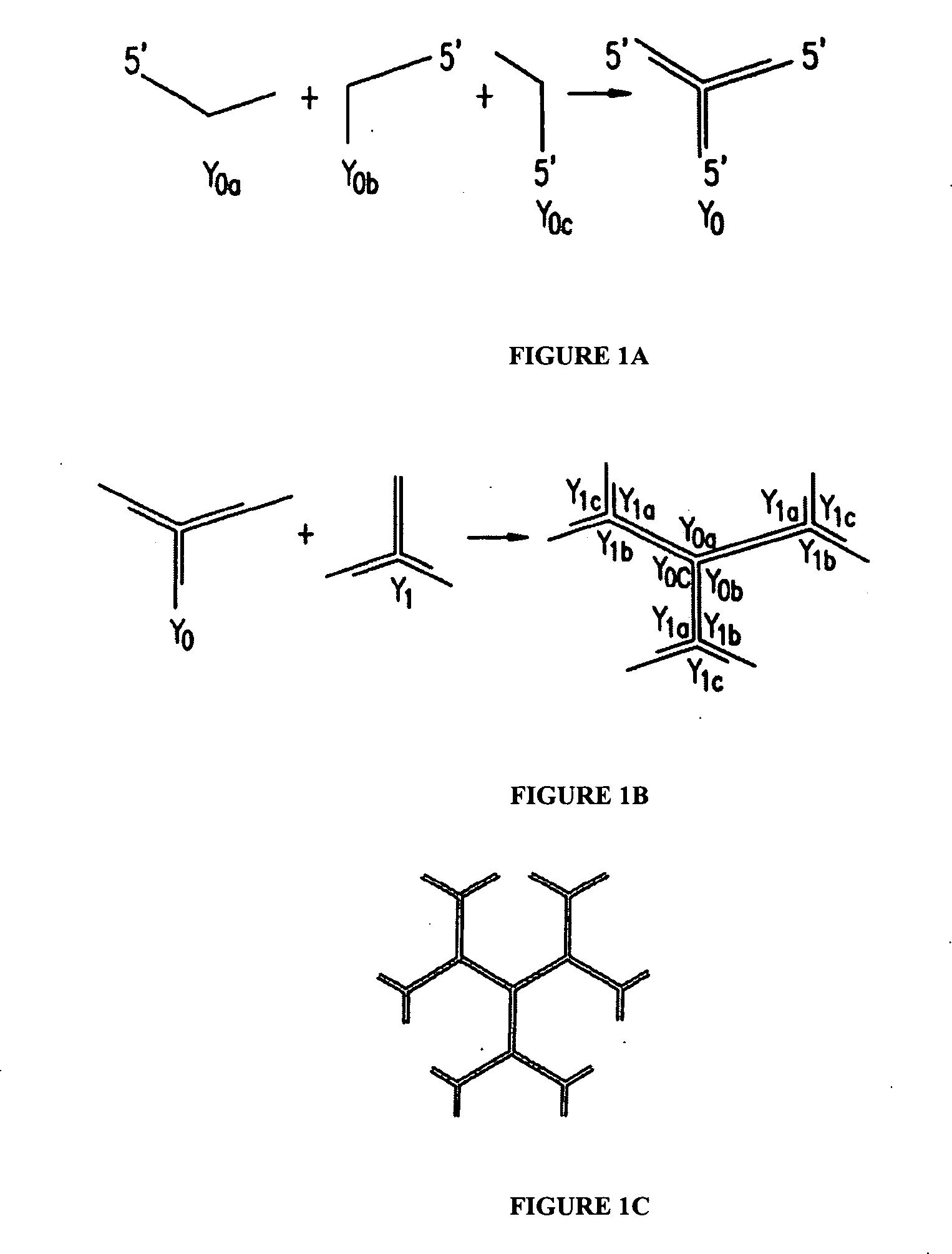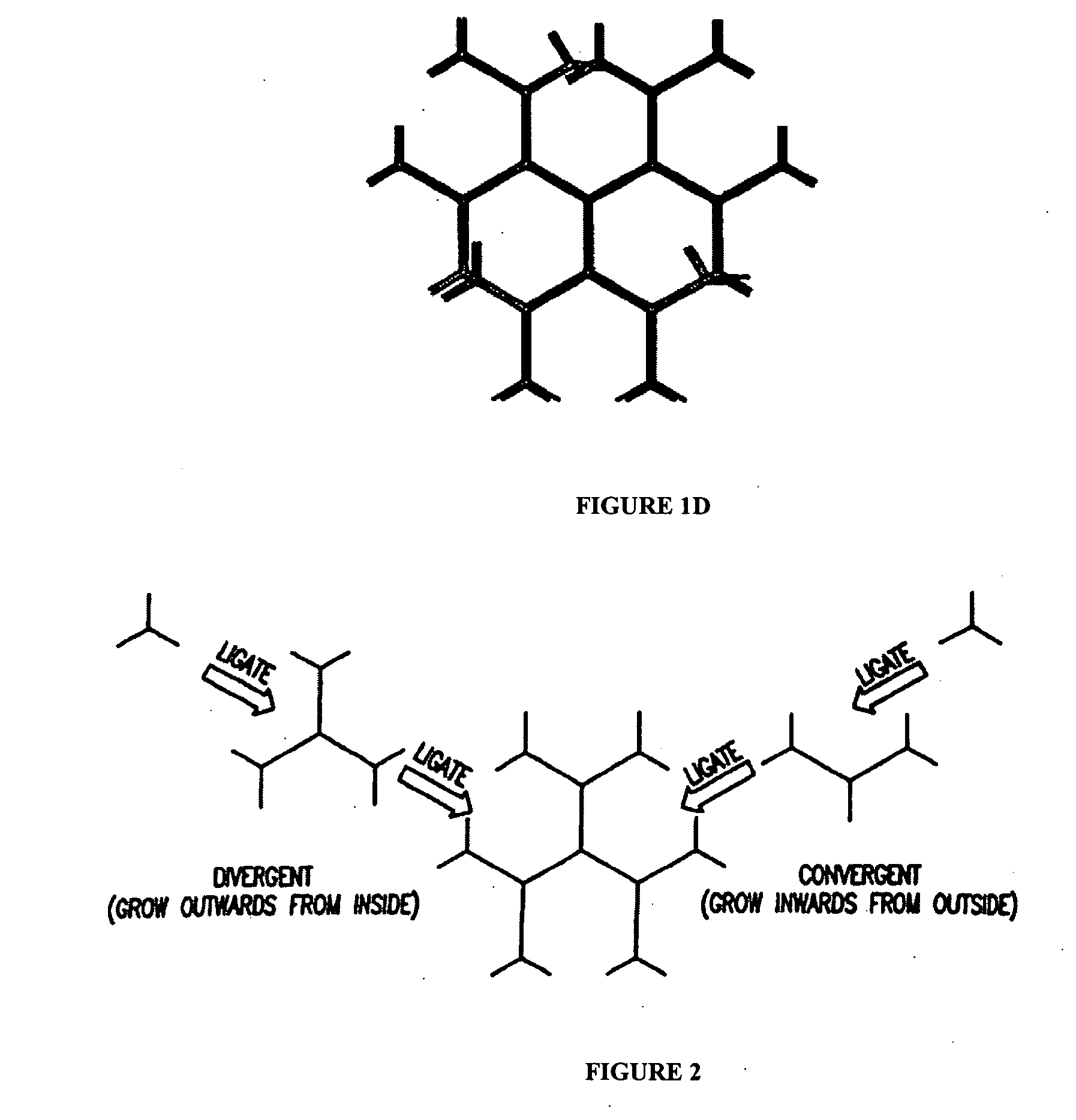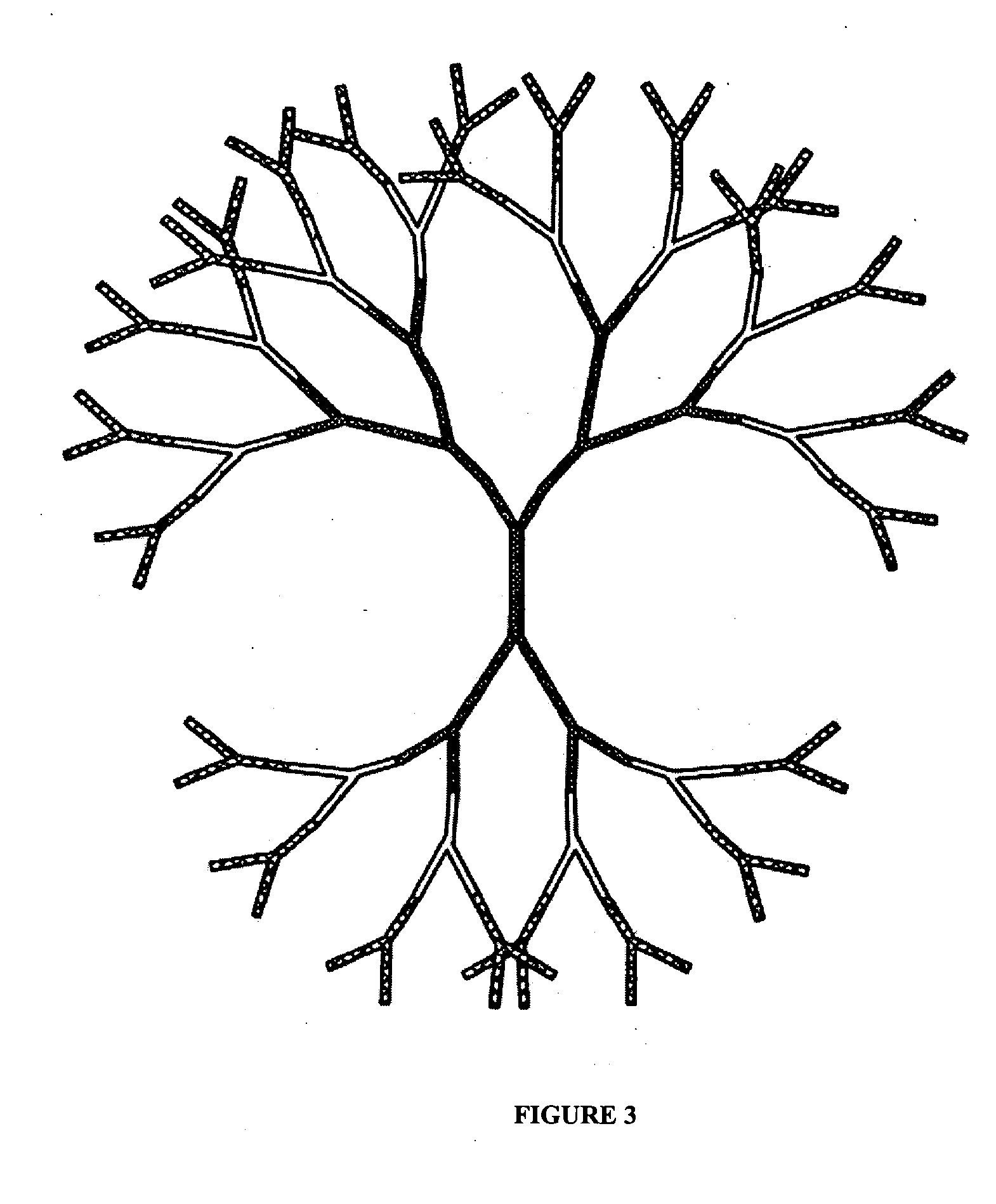Detection of target molecules with labeled nucleic acid detection molecules
a detection molecule and target technology, applied in the field of detection of target molecules, can solve the problems of limited utility of dna-based materials in constructing dna materials, design and production difficulties, and inability to detect targets, so as to achieve fast and sensitive, facilitate detection, and effectively expand the die power of traditional microscopy
- Summary
- Abstract
- Description
- Claims
- Application Information
AI Technical Summary
Benefits of technology
Problems solved by technology
Method used
Image
Examples
example 1
Synthesis of DNA Nanobarcodes
[0146] Dendrimer-like nucleic acid molecule (DL-NAM) nanostructures were constructed as described herein (Supra, Li et al. 2004).
[0147] The multivalent and anisotropic properties of DL-NAM were utilized here as fluorescent dye carriers (i.e. scaffoldings) to construct fluorescence-intensity-encoded nanobarcodes. Fluorescence labeled Y-shaped DNA (Y-DNA molecules were first synthesized where each Y-DNA consisted of three oligonucleotide components that are complementary to each other. One of the oligonucleotides consisted of a sticky end, and the other two were labeled with either fluorophores or a molecular probe. After hybridization these oligonucleotides formed a fluorescence labelled Y-DNA (FIG. 5A) that was used as a peripheral outmost layer of DL-NAM to construct fluorescence labeled DNA nanostructures. Since both dye type and dye number can be precisely controlled, multicolor fluorescence-intensity-encoded nanobarcodes could be fabricated (FIG. 5...
example 2
[0153] The DNA nanobarcodes were run in a 3% agarose ready gel (Bio-Rad. Hercules, Calif.) at 85 volts at room temperature in Tris-acetate-EDTA (TAE) buffer (40 mM Tris, 20 mM Acetic Acid and 1 mM EDTA, pH 8.0, Bio-Rad, Hercules, Calif.). After a true color picture of the gel was taken using a digital camera under strong UV illumination, it was stained with 0.5 μg / ml of ethidium bromide in Tae buffer. Briefly, 10 pmol of DNA sample in a denaturing buffer (10 mM EDTA. 25 mM NaOH) was heated at 95° C. for 2 min and then immediately cooled down in a −20° C. freezer. The denatured DNA sample was run through a 3% agarose gel at 50 v for 10 min and then 100 v for 80 min at 4° C. in TAE buffer containing 0.5 μg / ml of ethidium bromide.
[0154] With Alexa Fluor 488 alone and BODIPY 630 / 650 alone labelled oligonucleotides as controls (FIG. 5D, lanes 1 and 7, respectively), the obvious color changes from green and yellow to red (FIG. 5D, lanes 2 to 6) indicated the formation...
example 3
[0155] To detect pathogens (here, Bacillus anthracis, Francisella tularensis, Ebola virus, and SARS Coronavirus were targeted), a small fragment of characteristic DNA sequences from each potential species' genome was selected as the target DNA. Two separate sets of DNA probes, which were complementary to the two regions of the same target DNA, were synthesized. One blank control where the two sets of probes were complementary to each other, was also chosen. Thus, a library (Table 5) of two sets of single stranded DNA probe (Table 2) was created.
TABLE 11Code LibrarybarcodeCoded target4G1RAnthrax lethal factor of bacillus(GGA TTA TTG TTA AAT ATT GAT AAG GAT)(SEQ ID NO:81)2G1RLipoprotein gene of Francisella tularensis(435-463)(GCT GTA TCA TCA TTT AAT AAA CTG CTG)(SEQ ID NO:82)1G1RL gene of Ebola virus (13601-13631)(CAT GTC AGT GAT TAT TAT AAC CCA CCA)(SEQ ID NO:83)1G2RControl, where the capture probe and thereport were complementary to each otherfor hybridization control1G4RN...
PUM
| Property | Measurement | Unit |
|---|---|---|
| length | aaaaa | aaaaa |
| width | aaaaa | aaaaa |
| Tm | aaaaa | aaaaa |
Abstract
Description
Claims
Application Information
 Login to View More
Login to View More - R&D
- Intellectual Property
- Life Sciences
- Materials
- Tech Scout
- Unparalleled Data Quality
- Higher Quality Content
- 60% Fewer Hallucinations
Browse by: Latest US Patents, China's latest patents, Technical Efficacy Thesaurus, Application Domain, Technology Topic, Popular Technical Reports.
© 2025 PatSnap. All rights reserved.Legal|Privacy policy|Modern Slavery Act Transparency Statement|Sitemap|About US| Contact US: help@patsnap.com



